The EV market has exploded over the past few years, as cars of all shapes and sizes have gone electric. In fact, if you look at the top-selling electric cars in New Zealand, the list largely consists of SUVs. So while there are still plenty of zippy little electric hatchbacks about, you’re choices are by no means limited. There’s even a fully electric ute on the market (for now).
But providing Kiwis with a host of electric SUVs and utes isn’t the only barrier to converting the masses. Price is also an issue, as EVs tend to be more expensive than regular ICE models.
So for those in the market, but on a budget, Canstar takes a look at the cheapest electric cars in New Zealand.
In this article we cover:
The cheapest electric cars in New Zealand
Cheaper options? Second-hand EVs and hybrids
Benefits of an electric car
The cheapest electric cars in New Zealand
Below we list the five cheapest electric cars in New Zealand, along with an overview of each model. Prices listed are taken from the retailers’ websites.
Note that the below are passenger vehicles only.
| Car model | Starting Price | Advertised range |
| GWM Ora | $42,990 | 310kms |
| MG 4 | $46,990 | 350kms |
| Mini Hatch | $49,990 | 233kms |
| BYD Dolphin | $49,990 | 340kms |
| Nissan Leaf | $49,990 | 383kms |
GWM Ora – from $42,990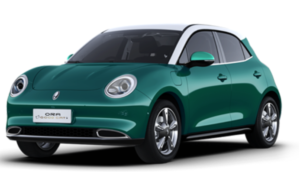
The GWM Ora burst onto the scene in April 2023 as the cheapest EV on the market. With a range of 310kms, the Ora is best suited to whizzing around the city rather than long-haul trips. Its compact build and 360 degree camera are ideal for getting in-and-out of tight spots and navigating traffic.
And at $42,990, it’s four grand lower than the next cheapest option!
An extended range model (420kms) is also available for $47,990.
MG 4 – from $46,990
The MG 4 only hit our shores in August, but it has quickly become the go-to EV for those on a budget. A reliable and modern compact SUV, it has plenty to offer for its price.
In typical MG form, there’s four models to choose from. The cheapest, the MG 4 Excite 5, comes with a range of features, including:
- Range of up to 350km
- MG Pilot – 9 safety features
- Rear wheel drive
- Auto start/stop and keyless entry
- Android Auto and Apple Carplay
- 500kg towing capacity
- 10.25-inch touch screen
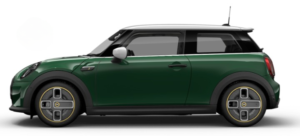 Mini Hatch – from $49,990
Mini Hatch – from $49,990
It might be Mini, but with a range of 233km, it certainly is mighty. The Mini Hatch has a top speed of 150km/h and can be charged from o% – 80% in just 36 minutes. The compact commuter sticks true to its Mini roots, with Union Jack detailing on steering wheel blade.
The Mini Hatch is available in seven colours, and features sun protection glazing and a
panorama glass sunroof.
BYD Dolphin – from $49,990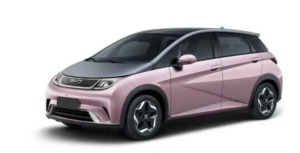
Another highly anticipated “affordable” EV has finally hit NZ shores: the BYD Dolphin. The Dolphin had a slow start at first. But the Dolphin has a massive month, narrowly missing out on being in the top 3 selling EVs in September.
The Dolphin is ideal for long-haul trips, as well as quick trips to the supermarket. Add in a fast charging time of 29 minutes to go from 30% to 80%, plus being the second cheapest EV on the market, the Dolphin is good value for money.
The Dolphin has two model variants, Standard ($49,990) and Extended ($55,990). The Standard model has a range of 340km and can go from 0-100kmh in 12.3 seconds.
Nissan Leaf – from $49,990
The Nissan Leaf is the EV that started it all. In 2009 it became the world’s first mass market EV. Over the years its range has improved significantly, and now the base model can travel up to 270km on a single charge. There are two models of the Leaf up for grabs – the Leaf and Leaf e+. The e+ comes in at $72,990 and has a range of up to 385km.
Compare Outstanding Value Car Insurance with Canstar
Looking for great value car insurance for you and your family? Each year, we release our car insurance awards, including winners for Insurer of the Year, Outstanding Value, and Most Satisfied Customers. As part of our award results, we also publish our Outstanding Value Star Ratings, covering car insurance for different age groups. Below are our top-rated providers in the drivers aged 30-49 category. Click here to view our complete car insurance Star Ratings for all age groups.
Comprehensive Cover: Drivers 30-49:
| Provider | Star Rating |

Car Insurer of the Year |
 |
 |
|
 |
 |
See here for our ratings methodology. The table above is an abridged version of our research. For the full results of our latest Car Insurance Ratings and Award, click here.
Are there any cheaper options?
Second-hand
If you’re truly on a budget, sites such as Trade Me Motors are awash with second-hand EVs.
You may be able to find some old Nissan Leafs for as little as $10,000 which could be a great option for a second car, great for work commutes and weekend errands. But bear in mind that most of these models are from the early to mid-2010s and the battery capacity will have reduced. So they won’t achieve the full range that was originally advertised on them. Not to mention, these older models just don’t have the range or features of modern EVs.
If you do go for an EV pushing a decade old, you might just have to factor in a potential battery replacement in the coming years.
If you can stretch your budget to $20,000 or even $30,000, then your options open up. With plenty of vehicles (although mainly Leafs still) only a few years old.
Hybrids
Another option could be opting for a plug-in hybrid (PHEV). These have a smaller electric battery, that can be plugged in and charged, alongside a petrol motor to fall back on. Typically, these are cheaper than EVs. But even the cheapest plug-in hybrid costs more than the GWM Ora. So that remains your cheapest option if buying new.
If you are looking at the second-hand market, you may have more options if you are open to a PHEV. The presence of a petrol motor can also lessen the worry about deteriorating battery performance.
Alternatively, standard hybrid vehicles (HEVs) which feature a small self-charging battery can be a good option. They may not be able to drive on electric alone, but they get good mileage and can help your fuel go further. They also tend to be low emission.
→Related article: Should You Buy a Hybrid? The Best Hybrid Cars in New Zealand
Compare car loans with Canstar
The table below displays some of the unsecured personal loan products available on Canstar’s database for a three-year loan of $10,000 in Auckland (some may have links to lenders’ websites). The products are sorted by Star Rating (highest to lowest) followed by company name (alphabetical). Use Canstar’s personal loan comparison selector to view a wider range of products on Canstar’s database. Canstar may earn a fee for referrals.
Compare car loans with Canstar
What are the benefits of electric cars?
Despite electric cars being more expensive to purchase, they can be cheaper in the long run. For example, if you’re paying the average electricity price in New Zealand, then charging an EV works out to the equivalent of paying about 30-40c per litre.
Furthermore, many electricity providers now offer EV power plans that offer discounted or even free power during the nights. So if you charge your EV during these hours, you may not even need to cough up that 30c per litre.
However, once RUC are introduced in March 2024, it will become significantly more expensive to run an EV. So if you’re considering purchasing an EV, it’s important to consider the long term costs.
→Related article: EV Power Plans: The Best Power Plans for Electric Vehicles
Some other benefits to electric cars are:
- Cheaper ongoing costs – Petrol costs aside, EVs typically have lower maintenance costs
- Environmentally friendly – the total emissions per mile for battery-powered cars are lower than comparable cars with internal combustion engines. Especially in NZ where much of our energy comes from renewable sources
- They’re smooth and quiet – there’s no engine noise and with no gears to work through, an EV is able to apply full power as soon as you touch the accelerator
- Added safety – the weighty battery pack gives your EV a lower centre of gravity, so it’s less likely to roll. The lack of petrol or diesel also reduces the likelihood of it catching fire in a crash
- NZ’s climate is ideal for electric cars – extreme heat and cold can impact an electric car’s battery life. Thankfully, many parts of NZ has an ideal temperate climate

About the author of this page
This report was written by Canstar Content Producer, Caitlin Bingham. Caitlin is an experienced writer whose passion for creativity led her to study communication and journalism. She began her career freelancing as a Search Engine Optimiser, before joining the Canstar team.

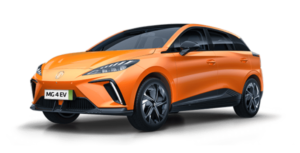
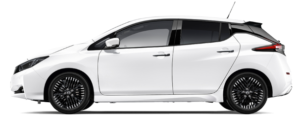



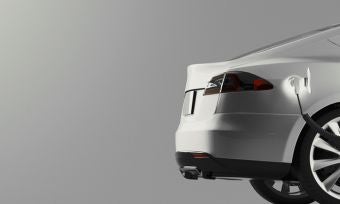


Share this article